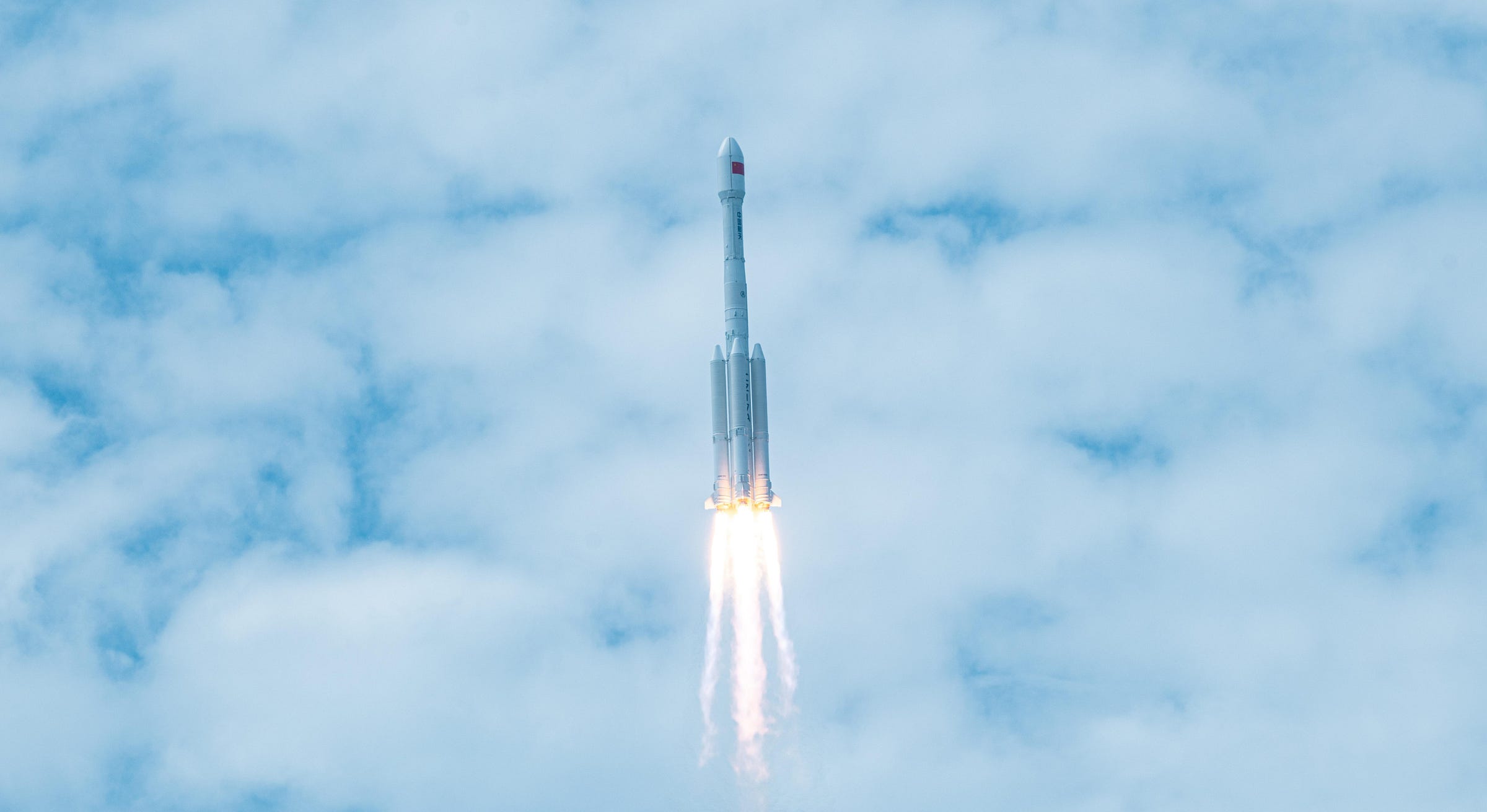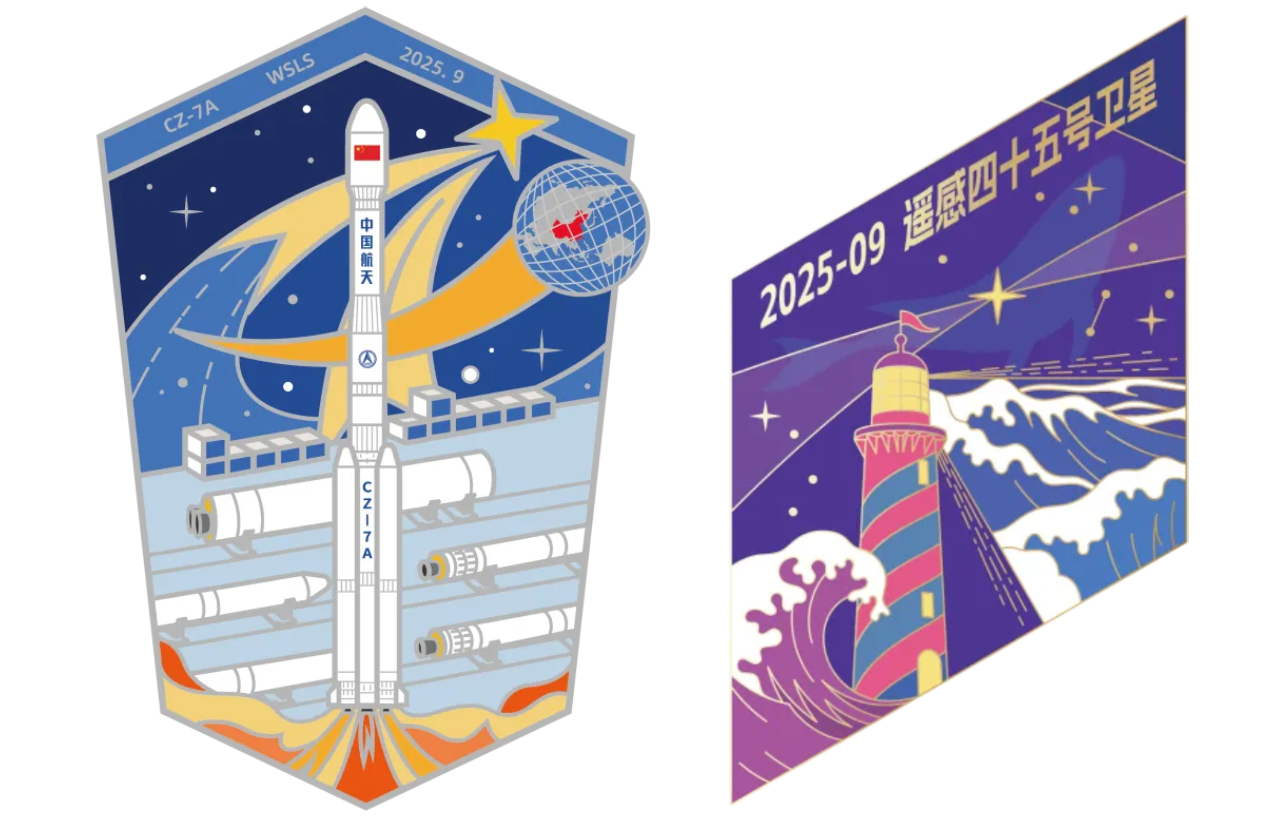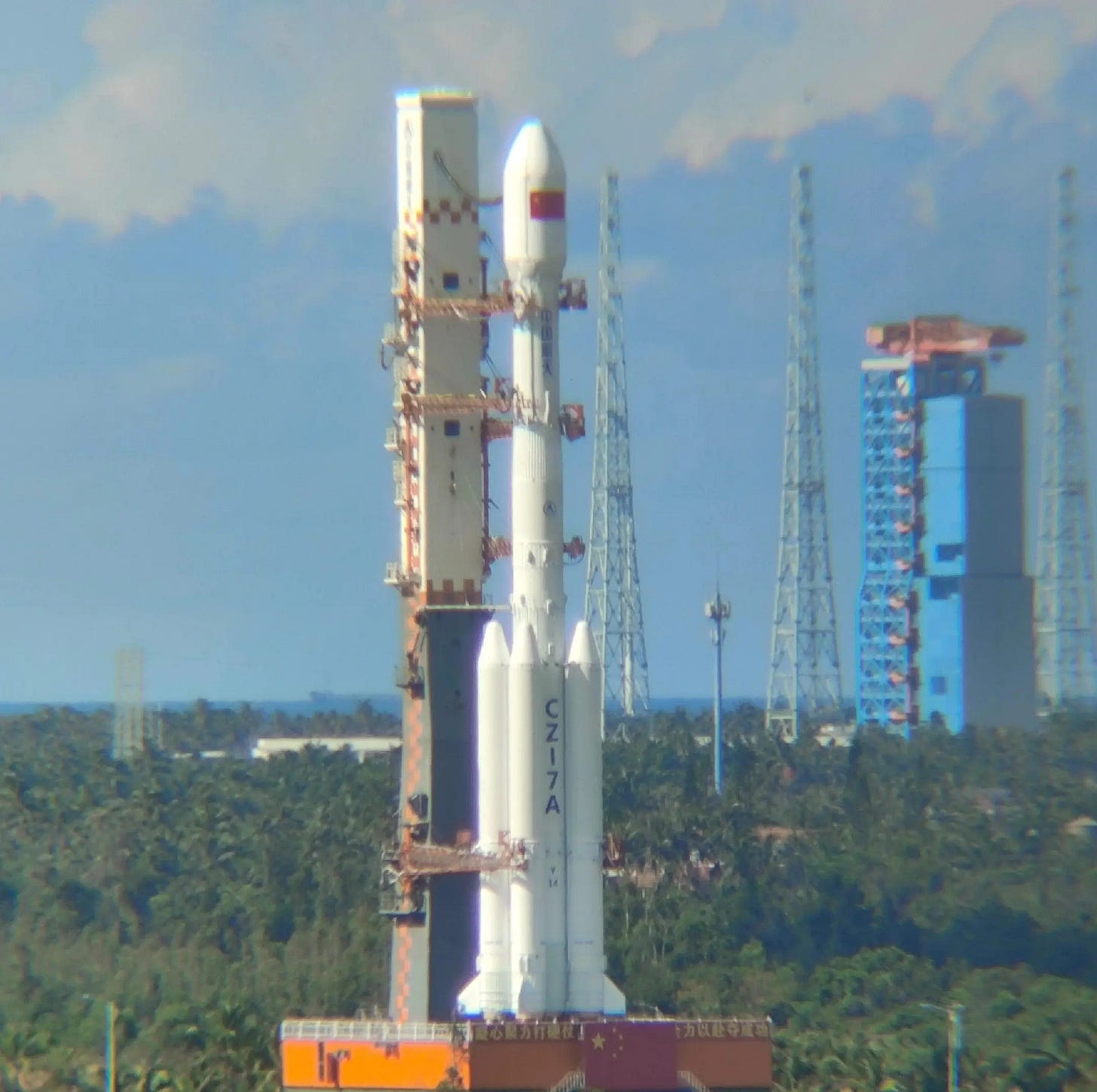Yaogan Satellite Heads for Medium Earth Orbit [Long March 7A Y14]
A second higher-orbit remote sensing satellite is now in space.
A Long March 7A lifted off from Launch Complex 201 at the Wenchang Space Launch Site heading toward a medium Earth orbit at 10:00 am China Standard Time (02:00 am Universal Coordinated Time) on September 9th. This launch had a single satellite onboard.
Heading into space atop the rocket was Yaogan-45 (遥感四十五号卫星), developed by the Shanghai Academy of Spaceflight Technology. The remote sensing spacecraft will reportedly be used for scientific experiments, land resource surveys, crop yield estimation, as well as disaster prevention and relief efforts.
Yaogan-45 is believed to be the second Yaogan series satellite beyond low Earth orbit. It follows the massive Yaogan-41 launched by a Long March 5 in 2023. Both satellites have similar reported tasks.
One major change was made to the rocket core structures ahead of today’s launch, allowing the rocket to lift around an extra 1,000 kilograms. The China Academy of Launch Vehicle Technology added that launch preparation times have been reduced from twenty-three days to nineteen to meet an increasing cadence with the Long March 7 series. Three other Long March 7 series vehicles have flown in 2025, two Long March 7A’s in March and May, followed by Long March 7 in July.
Today’s mission was the 11th launch of a Long March 7A vehicle, the 21st launch of the Long March 7 series, and the 594th launch of the Long March launch vehicle series. This was also the 55th launch from China in 2025.
Liftoff video via 卡尔达瓦里希 and 追箭部落 on Weibo.
Check out the previous Long March 7A launch
Space-Based Communications Infrastructure Expands [Long March 7A Y15]
Blasting off from Launch Complex 201 at the Wenchang Space Launch Site on May 20th at 19:50 pm China Standard Time (11:50 am Universal Coordinated Time), a Long March 7A headed for a geostationary transfer orbit, carrying a single satellite.
What is the Long March 7A?
This section is for those less familiar with China's Long March series of launch vehicles.
The Long March 7A is the new-generation workhorse for beyond low Earth orbit missions, and was developed by the China Academy of Launch Vehicle Technology. This vehicle utilizes a three-and-a-half-stage design and is fuelled by rocket-grade kerosene and liquid oxygen in its boosters, first, and second stages long with liquid hydrogen and liquid oxygen in the third-stage.
The payload capacity of the launch vehicle is currently as follows:
8,000+ kilograms to a medium Earth transfer orbit
7,000 kilograms to geostationary transfer orbit
5,500 kilograms to a 700-kilometer sun-synchronous orbit
5,000 kilograms to a trans-lunar trajectory
The Long March 7A's first stage is equipped with two YF-100 engines that produce 245 tons of thrust using rocket-grade kerosene and liquid oxygen, complemented by four boosters, each with a YF-100 engine generating 122 tons of thrust, resulting in a combined thrust of approximately 733 tons. The second stage is powered by four YF-115 engines, which together generate 72 tons of thrust using the same fuel combination. The third stage of the Long March 7A features two YF-75 engines, providing 17 tons of thrust by burning liquid hydrogen and liquid oxygen.
On the launchpad, the Long March 7A stands at 60.13 meters tall and weighs 573,000 kilograms when fully fuelled. The first and second-stage have a diameter of 3.35 meters, the four boosters are 2.25 meters in diameter, and the third-stage has a diameter of 3 meters, while the fairing has a diameter of 4.2 meters.
So far the Long March 7A has only flown from the Wenchang Space Launch Site, on the east coast of Hainan province.





![Space-Based Communications Infrastructure Expands [Long March 7A Y15]](https://substackcdn.com/image/fetch/$s_!j6Yt!,w_1300,h_650,c_fill,f_auto,q_auto:good,fl_progressive:steep,g_auto/https%3A%2F%2Fsubstack-post-media.s3.amazonaws.com%2Fpublic%2Fimages%2F3cef6a4e-a775-41e3-9b2c-8182a34c8092_1544x938.jpeg)
